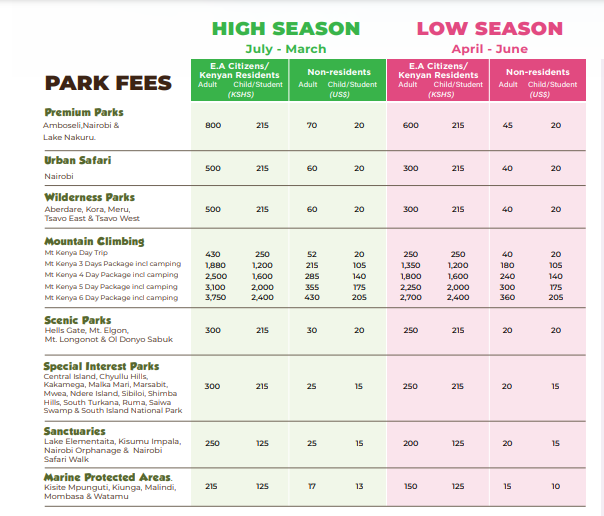Kenya’s national parks agency is seeking to boost visitor numbers to the country’s wilderness areas during the tourist low season, which runs from April to June every year.
For decades, the country has relied on the high season, running from July to March, when hordes of domestic and international tourists stream into the country’s hotels, lodges and national parks, with the centrepiece attraction being the Great Migration.
The Kenya Wildlife Service (KWS) wants to address the low-season slump by diversifying tourism products and introducing new activities.
“Bolstering the numbers visiting the parks and other tourist establishments in the low seasons will allow the sector to earn sufficient revenues translating to modest profitability throughout the year. We hope to eliminate the established view that the tourism sector can only boom during the high season. The aim is to make the low season as profitable,” said KWS Deputy Director of Parks and Reserves, George Osuri, at a recent stakeholder engagement session.
The approach is in line with Kenya’s new tourism strategy, which aims to position the country as a year-round tourism destination.
Osuri said one of the key mechanisms to achieve this was the review of current conservation fees to boost revenue for the further development of tourism within the parks. The current review, running from July 31, 2023 to 2025, has raised the conservation fee for non-residents visiting premium parks (Amboseli, Nairobi and Lake Nakuru) from US$40 to $45 during the low season.

Conservation fees for wilderness parks such as Tsavo East, Tsavo West and Meru have increased from $35 to $40. Other adjustments include the lowering of fees to climb Mount Kenya.
Conservation fees are the main source of revenue for Kenya’s parks, contributing 81% of total KWS revenue in 2022.
To diversify tourism appeal, the review has also seen the addition of nine new activities (bringing the total number available in KWS parks to 21). The new activities include children’s bootcamps, guided cave explorations, photo sessions, filming, animal tracking, warden lectures and commercial photography.
“Communities bordering parks can benefit immensely from the proposed activities. KWS is also willing to promote community-owned homestays in areas adjacent to national parks and reserves,” said Osuri.























